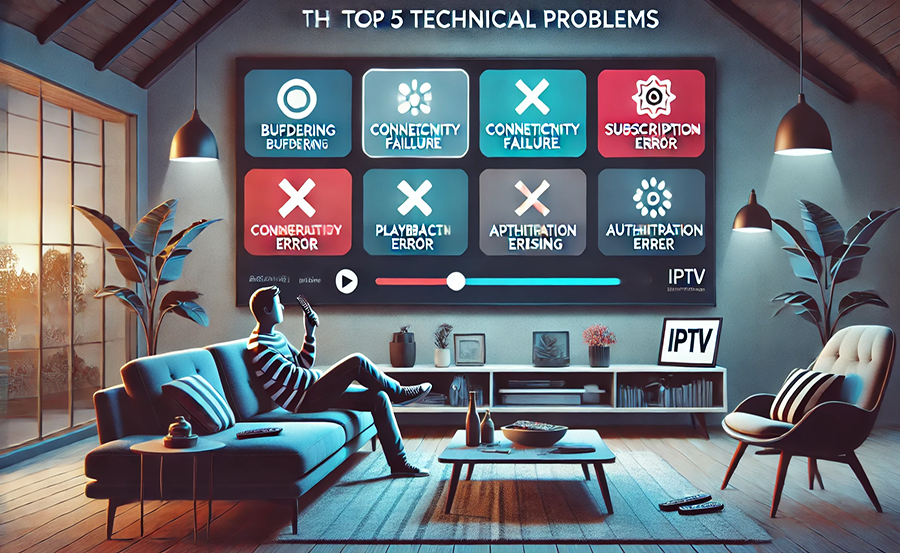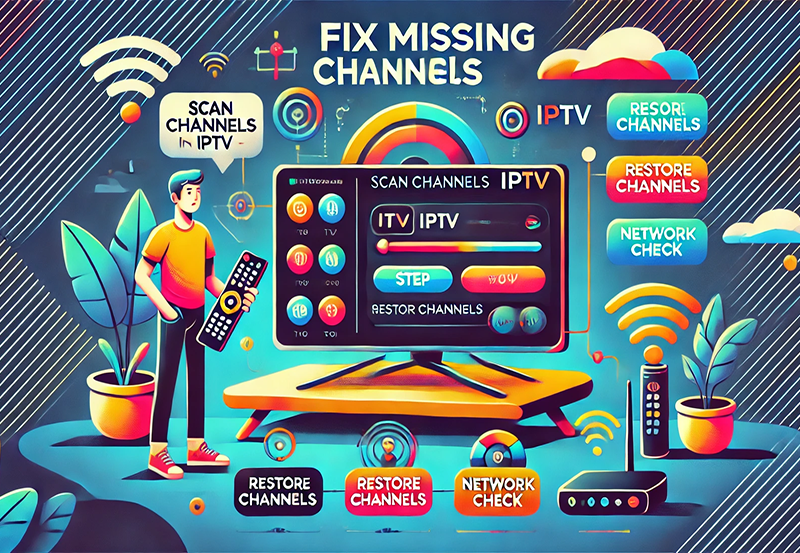Understanding IPTV Firewall Challenges
Internet Protocol Television (IPTV) has revolutionized the way we consume media, offering a plethora of channels and on-demand content at our fingertips. However, as more users flock to this platform, challenges arise, especially in the realm of firewalls. In this article, we’ll embark on a journey to uncover and address the top five IPTV firewall problems that users frequently encounter. While IPTV offers seamless streaming, firewalls can often be a double-edged sword—providing security yet restricting access at times. Let’s explore these challenges and their solutions.
Solution 1: Handling Network Congestion
Understanding Network Congestion in IPTV
Network congestion is one of the most common issues affecting IPTV services. When too many devices attempt to access the network simultaneously, bandwidth usage peaks, causing buffering and reduced video quality. This issue is often exacerbated by inefficient firewall configurations that inadvertently throttle IPTV traffic.
Resolving Network Congestion
To mitigate congestion, it’s crucial to prioritize IPTV traffic over less crucial data flows. Adopt Quality of Service (QoS) settings within your firewall configuration, which can allocate more bandwidth to streaming services, ensuring a smooth viewing experience. Additionally, consider upgrading to a higher bandwidth plan if multiple users and devices regularly access the network.
Solution 2: Overcoming Port Blocking
Port Blocking Explained
Firewalls often block certain ports by default, a feature intended to fend off malicious attacks. Unfortunately, many IPTV services require specific open ports to function correctly. When these are blocked, users face disruptions or complete access denial of their IPTV service.
Ensuring Port Accessibility
By configuring your firewall to allow specific ports used by your IPTV service, you can eliminate this problem. Typically, ports such as UDP 123, 80, or even custom ports for platforms like DuplexIPTV should be allowed. Always check the provider’s documentation for required port lists and tailor your firewall settings accordingly.
Solution 3: Advanced IP Address Filtering
Understanding IP Whitelisting
IP whitelisting involves allowing approved IP addresses to connect to your network, limiting access to known entities. While this enhances security, overly strict filtering can inadvertently block legitimate IPTV servers, disrupting service.
Adjusting IP Filtering Strategy
To balance security with accessibility, regularly review and update your whitelist. Include IP ranges recommended by your IPTV provider. Employing dynamic DNS services can also help maintain connectivity when using platforms like Ultimate Streaming Insights, as it allows automatic updates based on changing IPs.
Solution 4: Handling Encrypted Streaming Challenges
The Impact of Encrypted Streams
Encryption is essential for protecting data during transmission. However, when encryption protocols clash with firewall configurations, streaming quality can degrade, or connections can be blocked entirely.
Configuring Firewall for Encrypted Content
Ensure your firewall supports encrypted traffic by updating firmware and enabling protocols like HTTPS. Monitoring logs for blocked attempts can reveal which streams are falsely flagged, allowing you to adjust rule sets and ensure compatibility with encrypted IPTV content.
Solution 5: Managing Firmware and Software Updates
The Role of Updates in IPTV Performance
Outdated firmware and firewall software can lead to compatibility issues and security vulnerabilities. Keeping up with updates ensures your firewall operates at optimal efficiency, providing a more stable and secure platform for IPTV services.
Buy 1 Year IPTV Subscription and Enjoy Unlimited Content
Staying Ahead with Updates
Routinely check for the latest firmware and software updates for your firewall device. Updates often include improvements and patches that can address newly discovered threats or performance inefficiencies, ensuring your network remains stable and IPTV services uninterrupted.
The Road to Uninterrupted Streaming
Overcoming IPTV firewall problems might seem daunting, but with the right approach and solutions, uninterrupted streaming becomes possible. By proactively managing network configuration, staying informed about updates, and prioritizing your IPTV traffic, you’re paving the path to a smooth viewing experience.
FAQs on IPTV Firewall Challenges

- Q: What is the main cause of IPTV buffering?
A: Buffering is primarily caused by network congestion, which can be alleviated by adjusting firewall settings to prioritize IPTV traffic.
- Q: How can I tell if a port is being blocked by my firewall?
A: You can use network scanning tools or check firewall logs for blocked connections to identify whether specific ports used by your IPTV service are being blocked.
- Q: Is enabling encryption necessary for IPTV?
A: While not mandatory, enabling encryption ensures data security and compatibility with encrypted content, reducing the risk of service disruptions.
- Q: How often should firewall updates be applied?
A: It’s best to apply firewall updates as they become available to ensure optimal performance and security.
- Q: What is DuplexIPTV, and how does it affect firewall settings?
A: DuplexIPTV is a popular IPTV service that may require specific firewall configurations such as port allowances and IP whitelisting for seamless operation.
AVOV IPTV Box and Android Integration: full tip





